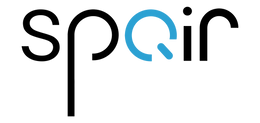National Free Service Email: info@spairobot.com

Get A Quote
How Do Robot Vacuums Know Where to Go?
How do robot vacuums navigate the floor while performing vacuuming, cleaning, and sweeping tasks? In their initial launch, robot vacuums relied on rudimentary technology, moving in a somewhat random manner during cleaning. Although they could cover large areas, their efficiency suffered as they tended to revisit the same spots repeatedly.
Modern iterations utilize a sophisticated navigation system for robot vacuums, powered by algorithms and sensors. I will tell you how do robot vacuums know where to go.
What is Robot Vacuum Mapping?
Robot vacuum mapping is a crucial procedure during the initial cleaning phase where the robot vacuums create a map of your house. This mapping process enhances the robot's understanding of your home's layout, facilitating more efficient cleaning across all areas. High-end models excel in cleaning various surfaces, including hard floors and carpets. The mapping feature proves particularly useful in distinguishing between similar textures, ensuring the avoidance of already cleaned sections.
The generated map can be conveniently stored in a smartphone app, providing an excellent solution for larger homes. This app allows users to select specific areas for the robot to clean, enabling targeted zone cleaning.
Upon acquiring a robot vacuum, it's advisable to be present during its initial cleaning sessions to monitor and guide the learning process. As the robot familiarizes itself with your home, it refines its cleaning routes.
After completing a cleaning cycle or when the battery is low, the robot vacuum employs infrared signals to locate its charging base. The device then navigates back to the base for recharging before resuming its cleaning duties. Despite the apparent simplicity of this process, various methods exist for devices to effectively map and navigate homes.
How Do Robot Vacuums Navigate by sensors?
Robot vacuum navigation relies on a sophisticated network of sensors that enhance its cleaning efficiency. Mapping plays a key role in establishing cleaning routes, and as the robot moves, various sensors come into play to navigate through different conditions. Let's delve into the essential types of sensors, including cliff sensors, obstacle sensors, and other technological components that contribute to the seamless functioning of these devices.
1. Cliff Sensors:
All robot vacuums incorporate cliff sensors as a safety standard. These sensors employ infrared light, reflecting it off objects. The reflected signal is then received by the vacuum. If no signal is detected, indicating no object in the path, the vacuum alters its course. This prevents potential accidents, such as falling off staircases.
2. Obstacle Sensors:
During home cleaning, the vacuum encounters various obstacles like furniture. Obstacle sensors, typically located on the vacuum's bumpers, guide it around these impediments. Upon contact with an object, the sensor activates, prompting the vacuum to change its direction to avoid collisions.
3. Wall Sensors:
Using infrared light, wall sensors detect walls and enable the robot to clean along boundaries. This technology ensures effective cleaning without causing collisions with walls, enhancing the overall cleaning performance.
4. Wheel Sensors:
Light sensors integrated into wheel mechanisms monitor wheel rotation to calculate the distance covered. Although more common in earlier robot vacuum models, higher-end devices have moved away from using wheel sensors. Low-end models may still incorporate them for basic distance measurement.
In essence, these sensors form a comprehensive system that allows robot vacuums to navigate and clean homes efficiently while avoiding potential hazards and obstacles.
Conclusion
Equipped with cutting-edge technology, the robot vacuum seamlessly maintains home cleanliness for a remarkable 150 minutes (2 hours and 30 minutes) before requiring a docking and recharging session. In the event of a power depletion, the vacuum autonomously navigates to the base station for a recharge. The base serves as both a resting and charging hub, eliminating the need for manual intervention such as plugging it in or issuing charging commands. The intuitive smart technology takes charge, ensuring the vacuum responds promptly to signals for recharging, thereby mitigating the risk of interruptions due to power loss during the cleaning process.Come to SPAIR and pick your robot vacuum cleaner.

